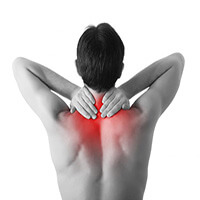 The Feeling Of A Good Workout!
The Feeling Of A Good Workout!
So let’s say you get done with a workout and you pushed yourself more than you thought you would. You still feel great, but the next day your body is completely sore. It’s what many like to call a “good pain” feeling. So why do we get sore after we workout? This article will go over how are bodies work while we exercise, how pushing our bodies to workout harder and longer and how the “good pain” is actually a good sign. I’ll tell you right now, you don’t have to worry about that sore feeling anymore!
Typically, our bodies that aren’t used to a specific activity or exercise and we begin this activity our bodies are going to react by feeling tired and sore. Now this is normal as you are working out your muscles in a way they haven’t been worked before. Muscle pain that shows up a day or two after exercising can affect anyone, regardless of your fitness level. It’s important to let it throw off your workout routines because it’ll only last a few days at most and is typically a sign of your improving fitness. Keep reading on to find out how to avoid these sore muscles after exercise!
So Why Do We Get Sore?
Why do we get sore? is a pretty common question asked my many beginners. DOMS or Delayed Onset Muscle Soreness is a pretty normal side effect of the muscle building process. The exact mechanism that causes it is not totally understood. Many tend to think that it’s a result of microscopic tears in the muscle and surrounding connective tissues as a result of eccentric exercise. This phase of exercise occurs when muscles are lengthening themselves. Some classic examples would be lowering a dumbbell back to its starting position during bicep curls or running downhill. DOMS, however, does not build up lactic acid, which is actually a common myth. Sometimes and rarely the symptoms of DOMS isn’t just about the soreness, they can include weakness, stiffness, and sensitivity to touch. This usually appears within 12 to 24 hours after exercise and peaks after 24 to 72 hours, ultimately disappearing within three to five days.
How Do We Prevent Or Cope With Soreness?
The best way to get through it, is to deal with the pain and soreness that comes along with working out. Many often refer it to a good pain and it doesn’t last forever. However, there may be a few steps you can take to be kind to your body while you deal with this post-workout pain. Tart cherry juice, ginger and turmeric are all natural anti-inflammatory that may help minimize the pain. It is also said that both watermelon juice and the topical application of arnica have also provided relief.
For athletes, cold water baths or alternating hot-and-cold water baths may have a positive effect on recovery time. It still hasn’t been proven whether or not over the counter pain relievers and nonsteroidal anti-inflammatory drugs provide much help in relieving your pain. Although, acetaminophen appears to be effective at reducing pain-thereby allowing athletes to push harder and improve performance.
